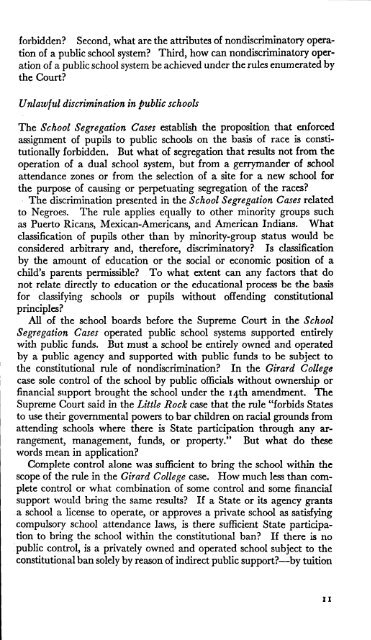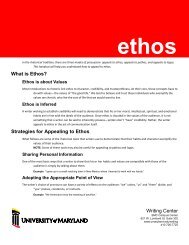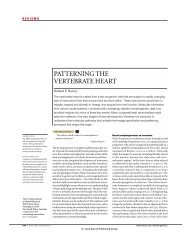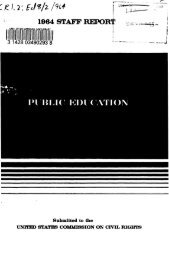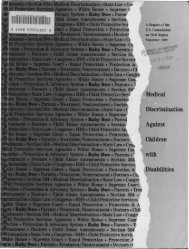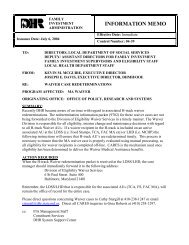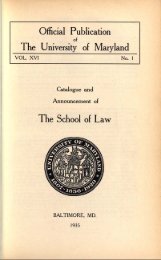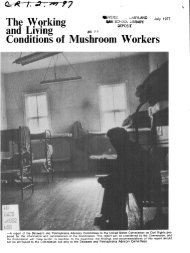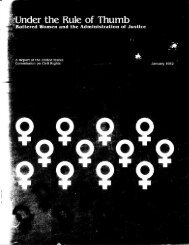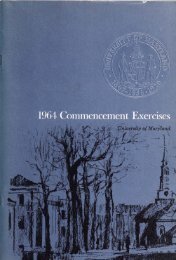1961 US Commission on Civil Rights Report Book 2 - University of ...
1961 US Commission on Civil Rights Report Book 2 - University of ...
1961 US Commission on Civil Rights Report Book 2 - University of ...
You also want an ePaper? Increase the reach of your titles
YUMPU automatically turns print PDFs into web optimized ePapers that Google loves.
forbidden? Sec<strong>on</strong>d, what are the attributes <strong>of</strong> n<strong>on</strong>discriminatory operati<strong>on</strong><br />
<strong>of</strong> a public school system? Third, how can n<strong>on</strong>discriminatory operati<strong>on</strong><br />
<strong>of</strong> a public school system be achieved under the rules enumerated by<br />
the Court?<br />
Unlawful discriminati<strong>on</strong> in public schools<br />
The School Segregati<strong>on</strong> Cases establish the propositi<strong>on</strong> that enforced<br />
assignment <strong>of</strong> pupils to public schools <strong>on</strong> the basis <strong>of</strong> race is c<strong>on</strong>stituti<strong>on</strong>ally<br />
forbidden. But what <strong>of</strong> segregati<strong>on</strong> that results not from the<br />
operati<strong>on</strong> <strong>of</strong> a dual school system, but from a gerrymander <strong>of</strong> school<br />
attendance z<strong>on</strong>es or from the selecti<strong>on</strong> <strong>of</strong> a site for a new school for<br />
the purpose <strong>of</strong> causing or perpetuating segregati<strong>on</strong> <strong>of</strong> the races?<br />
The discriminati<strong>on</strong> presented in the School Segregati<strong>on</strong> Cases related<br />
to Negroes. The rule applies equally to other minority groups such<br />
as Puerto Ricans, Mexican-Americans, and American Indians. What<br />
classificati<strong>on</strong> <strong>of</strong> pupils other than by minority-group status would be<br />
c<strong>on</strong>sidered arbitrary and, therefore, discriminatory? Is classificati<strong>on</strong><br />
by the amount <strong>of</strong> educati<strong>on</strong> or the social or ec<strong>on</strong>omic positi<strong>on</strong> <strong>of</strong> a<br />
child's parents permissible? To what extent can any factors that do<br />
not relate directly to educati<strong>on</strong> or the educati<strong>on</strong>al process be the basis<br />
for classifying schools or pupils without <strong>of</strong>fending c<strong>on</strong>stituti<strong>on</strong>al<br />
principles?<br />
All <strong>of</strong> the school boards before the Supreme Court in the School<br />
Segregati<strong>on</strong> Cases operated public school systems supported entirely<br />
with public funds. But must a school be entirely owned and operated<br />
by a public agency and supported with public funds to be subject to<br />
the c<strong>on</strong>stituti<strong>on</strong>al rule <strong>of</strong> n<strong>on</strong>discriminati<strong>on</strong>? In the Girard College<br />
case sole c<strong>on</strong>trol <strong>of</strong> the school by public <strong>of</strong>ficials without ownership or<br />
financial support brought the school under the I4th amendment. The<br />
Supreme Court said in the Little Rock case that the rule "forbids States<br />
to use their governmental powers to bar children <strong>on</strong> racial grounds from<br />
attending schools where there is State participati<strong>on</strong> through any arrangement,<br />
management, funds, or property." But what do these<br />
words mean in applicati<strong>on</strong>?<br />
Complete c<strong>on</strong>trol al<strong>on</strong>e was sufficient to bring the school within the<br />
scope <strong>of</strong> the rule in the Girard College case. How much less than complete<br />
c<strong>on</strong>trol or what combinati<strong>on</strong> <strong>of</strong> some c<strong>on</strong>trol and some financial<br />
support would bring the same results? If a State or its agency grants<br />
a school a license to operate, or approves a private school as satisfying<br />
compulsory school attendance laws, is there sufficient State participati<strong>on</strong><br />
to bring the school within the c<strong>on</strong>stituti<strong>on</strong>al ban? If there is no<br />
public c<strong>on</strong>trol, is a privately owned and operated school subject to the<br />
c<strong>on</strong>stituti<strong>on</strong>al ban solely by reas<strong>on</strong> <strong>of</strong> indirect public support?—by tuiti<strong>on</strong><br />
ii


